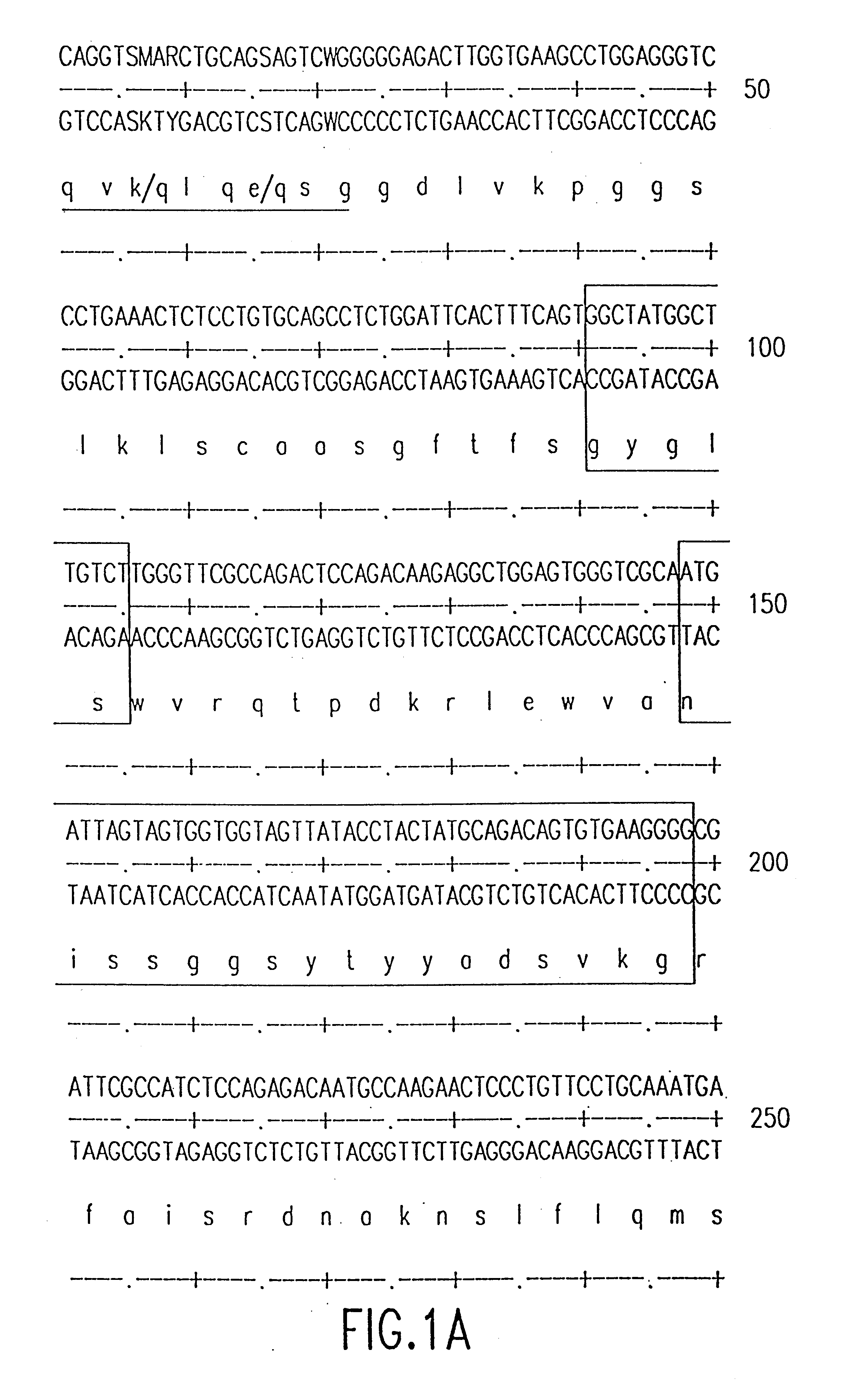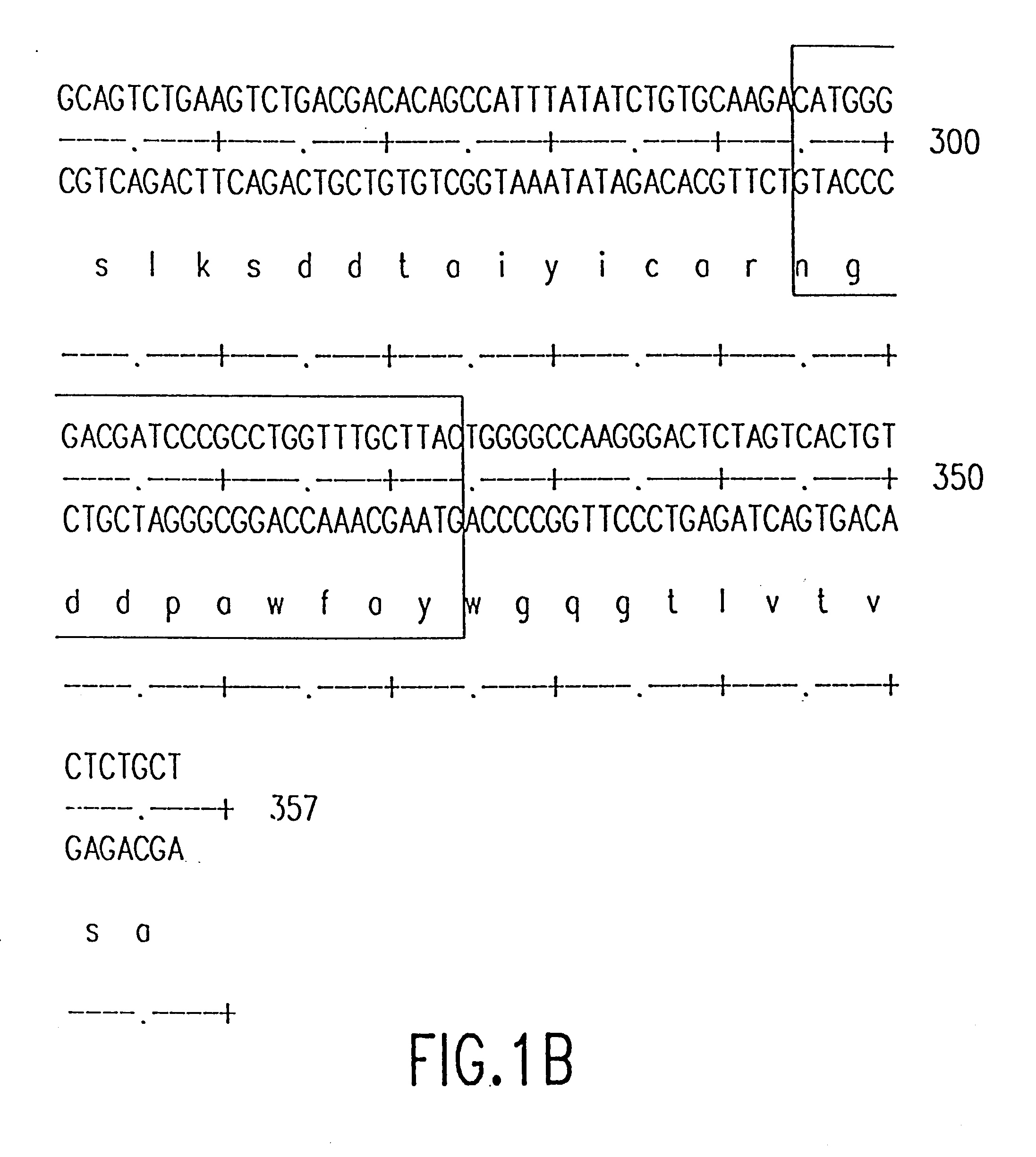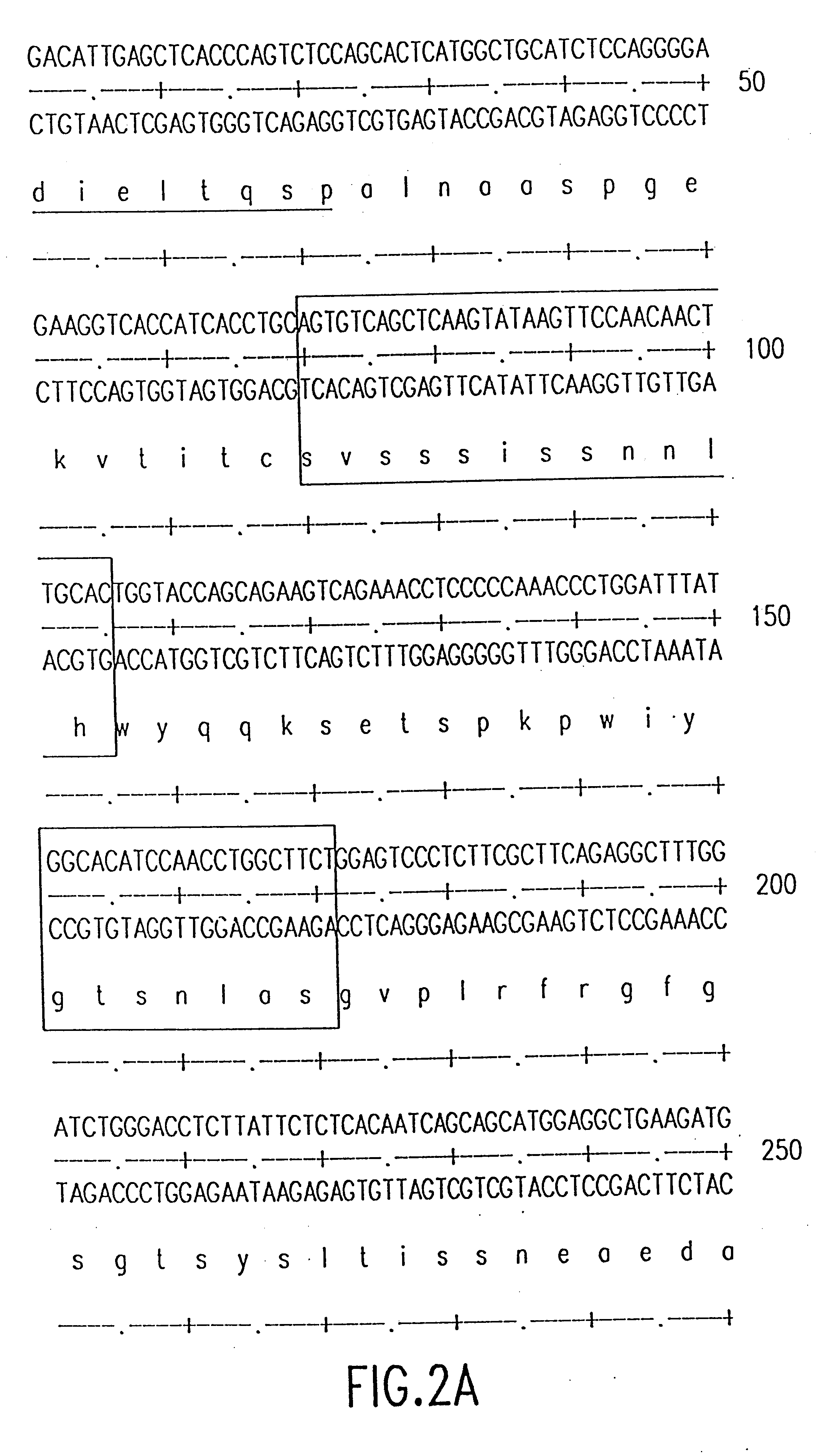Method for treating cancers
a cancer and cancer technology, applied in the field of molecular biology, can solve the problems of severely curtailing the in vitro use of murine antibodies as agents for the diagnosis and treatment of human diseases, insufficient humanized antibody production, and insufficient substitution of murine cdrs for human cdrs
- Summary
- Abstract
- Description
- Claims
- Application Information
AI Technical Summary
Problems solved by technology
Method used
Image
Examples
example 1
5.1.1. Example 1
Production of Humanized Antibodies Specific for the LK26 Antigen
The source of the donor CDRs used to prepare these recombinant antibodies was a murine monoclonal antibody, mAbLK26, which is specific for the LK26 antigen of certain human cancers. The LK26 monoclonal antibody was produced by immunization of (BALB / c x C57BL / 6) F.sub.1 mice with LU-75(c) choriocarcinoma cell lines and subsequent production and screening of hybridoma cells. Cytoplasmic RNA was prepared from the mAb LK26 hybridoma cell line by the method of Favoloro, J. et al., (1980), Methods in Enzymology 65:718-749). cDNA was synthesized using Ig variable region primers as follows: for the Ig heavy chain variable region (VH), the primer CG2aFOR (5' GGAAGCTTAGACCGATGGGGCTGTTGTTTTG 3') (SEQ ID NO: 1); for the light chain variable region (VK), the primer CK2FOR (5' GGAAGCTTGAAGATGGATACAGTTGGTGCAGC 3') (SEQ ID NO: 2). CDNA synthesis reactions consisted of 5 .mu.g RNA, 20 pmol CG2aFOR or CK2FOR, 250 .mu.M ea...
example 2
5.1.2. Example 2
Specific Binding of Humanized LK26 Antibodies to Carcinoma Cells
The recombinant antibodies have been tested in ELISAs using the SW620 target cells. The ELISA method used is as follows:
SW620 cells are diluted to 1.5.times.10.sup.5 -2.5.times.10.sup.5 cells / ml in DMEM, 10% FCS and 20 .mu.l (ie 3-5.times.10.sup.4 cells) added to each well. Cells are grown until nearly confluent (about 2 days). Plates are washed 2.times. with PBS and 100 .mu.l antibody (diluted in DMEM) added. Incubation is carried out at 4.degree. C. for 1 hour. The wells are washed 3.times. with PBS and 100 .mu.l of appropriate reporter antibody added, ie either goat anti-human IgG1, HRPO conjugate (Sera-lab, 0.4 mg / ml, diluted 1: 500 in DMEM) or goat anti-mouse IgG1, HRPO conjugate (Sera-lab, 0.4 mg / ml, diluted 1:500 in DMEM), incubation is carried out at 4.degree. C. for 1 hour. Wells are washed 3.times. with PBS and bound reporter antibody detected using H.sub.2 O.sub.2 and o-phenylenediaminedihydro...
PUM
| Property | Measurement | Unit |
|---|---|---|
| molecular weight | aaaaa | aaaaa |
| molecular weight | aaaaa | aaaaa |
| volume | aaaaa | aaaaa |
Abstract
Description
Claims
Application Information
 Login to View More
Login to View More - R&D
- Intellectual Property
- Life Sciences
- Materials
- Tech Scout
- Unparalleled Data Quality
- Higher Quality Content
- 60% Fewer Hallucinations
Browse by: Latest US Patents, China's latest patents, Technical Efficacy Thesaurus, Application Domain, Technology Topic, Popular Technical Reports.
© 2025 PatSnap. All rights reserved.Legal|Privacy policy|Modern Slavery Act Transparency Statement|Sitemap|About US| Contact US: help@patsnap.com



